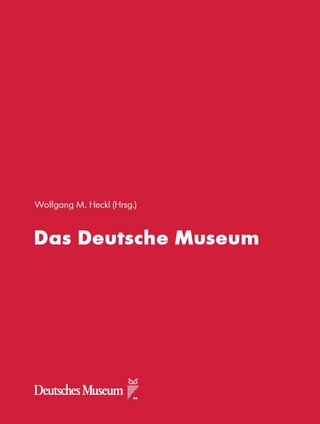
Public Art and Museums in Cultural Districts
Routledge (Verlag)
978-0-8153-5957-9 (ISBN)
The type of historical enquiry presented within the volume is not intended as a total narrative, but the international study cases considered convey a global panorama of the shifting paradigms set in different periods by some cultural neighbourhoods and emulated worldwide. Blurring boundaries between art history, museology and urbanism, this critical account explores past tensions, achievements and failures, giving insightful consideration to present policies and pointing out reasonable recommendations for the future regarding public heritage. Presenting for the first time an insights into the role of collections of public art as landmarks of cultural districts, this book considers collections displayed outdoors from the double perspective of curatorial outreach and civic values.
This book will fill a gap in the existing museum studies literature, hitherto mainly focused on indoor collecting and curatorial policies, but increasingly more and more attentive to their outside context. As such, the book should be of great interest to academics, researchers and students working in the fields of art, heritage, museum studies and urban history. It should also be of value to professionals working in the museum and art sectors.
J. Pedro Lorente is Professor of Art History at the University of Saragossa, Spain
List of figures
Acknowledgements
1 Introduction: museum borders and disciplinary boundaries
PART I Monuments on the fringes of museums
2 Art districts in the visual culture of the Enlightenment and Romanticism
2.1 Classical statues and museums in the urban epicentres of art capitals
2.2 Museums and monuments as cultural lures for urban expansions
3 Statues of great artists erected near museums
3.1 The first urban monuments devoted to artists; pioneering cases adjacent to art institutions
3.2 Setting monumental trends in art districts at the turn of the century
3.3 The apex and last stages of those icons, relegated by other forms of cultural branding
PART II Modern arcadias
4 High culture on urban heights: the mouseion ideal as city crown
4.1 Cultural promontories in urban utopias from antiquity to the nineteenth century
4.2 The Mathildenhöhe: high court and Gesamtkunstwerk
4.3 Ill-fated derivations, from cultural urban crown to museum with broad views
5 Modernity expands into green fields
5.1 Gardens as extensions of museums in Rodin’s period and his legacy
5.2 Urban museums with sculpture gardens: a typical dream of the Modern Movement
5.3 Seeking greener pastures : modern art expansion in parks or rural estates
PART III Museums taken to the streets
6 Open air museums as an urban phenomenon
6.1 The rural genesis of open air museums – of ethnology rather than art
6.2 A political and urban landmark: Museo de la Castellana in Madrid
6.3 What’s in a name? Proliferation of the so-called museums of outdoor sculptures
6.4 An unambiguously urban trend of the present: museums of street art
7 Dialectics of museums/public art articulation at the turn of the millennium
7.1 Conceptual ‘antimonuments’ and institutional critique within museum environments
7.2 Postmodern return of monumental statues as popular attractions
7.3 Public art as an interface: overcoming boundaries between outdoor and indoor exhibition space
8 Epilogue: heritology, a new discipline for the study of public art and museums in cultural districts
References
Index
| Erscheinungsdatum | 30.09.2018 |
|---|---|
| Reihe/Serie | Routledge Research in Museum Studies |
| Zusatzinfo | 52 Illustrations, black and white |
| Verlagsort | New York |
| Sprache | englisch |
| Maße | 156 x 234 mm |
| Gewicht | 249 g |
| Themenwelt | Kunst / Musik / Theater ► Kunstgeschichte / Kunststile |
| Geisteswissenschaften ► Geschichte ► Hilfswissenschaften | |
| ISBN-10 | 0-8153-5957-8 / 0815359578 |
| ISBN-13 | 978-0-8153-5957-9 / 9780815359579 |
| Zustand | Neuware |
| Haben Sie eine Frage zum Produkt? |
aus dem Bereich


